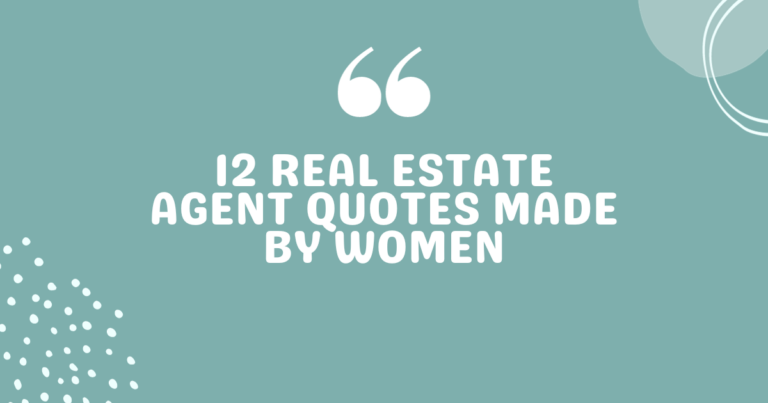SAFE vs. Convertible Note: What’s the Difference?

When you’re at the seed stage of your startup, choosing the right funding option is crucial. Two popular instruments are SAFEs (Simple Agreements for Future Equity) and convertible notes. Understanding the nuances of each can help you make an informed decision about which is best for your startup’s needs.
What Is a SAFE?
A SAFE, standing for Simple Agreement for Future Equity, is an innovative financial tool used primarily in the seed-stage funding of startups. This instrument was created by Y Combinator, a well-known startup accelerator, in 2013 to simplify the investment process for early-stage companies.
The essence of a SAFE is that it allows investors to provide capital to a startup with the understanding that their investment will be converted into equity at a later date. This conversion typically occurs during a future equity financing round, and the terms are predefined in the SAFE agreement. One of the most attractive features of a SAFE is its simplicity compared to other investment vehicles. It is designed to be straightforward, reducing the legal complexity and cost for both startups and investors.
Unlike traditional equity investments, SAFEs are not loans and therefore do not accrue interest. They do not have a maturity date, meaning they do not have to be repaid by a specific time. This aspect can be particularly beneficial for startups that might not have the capital or revenue to manage regular debt repayments.
When the startup raises a priced equity round, the SAFE converts into equity at either the valuation cap or the discount rate specified in the agreement, whichever is more favorable to the investor. This conversion mechanism is designed to reward early investors for taking on more risk by giving them the opportunity to buy shares at a lower price compared to later investors.
What Is a Convertible Note?
A convertible note is a popular financial instrument used in seed-stage funding, particularly for startups. It represents a unique blend of debt and equity, providing a flexible funding option for early-stage companies. This type of investment is often favored by both investors and startups due to its versatility and relative simplicity.
Essentially, a convertible note is a short-term loan that converts into equity, typically when the startup raises its next round of funding. This conversion is usually triggered by a specific event, such as a future financing round, and is subject to the terms agreed upon in the note.
Here are the key features of a convertible note:
- Debt Nature with Equity Potential: Initially, a convertible note is a loan. It carries an interest rate and has a maturity date, just like a standard loan. However, instead of being repaid in cash, the principal and accrued interest are converted into equity at a later stage, usually during a significant funding round.
- Interest Rate: Convertible notes accrue interest over time. However, the interest is typically not paid out in cash but adds to the total amount that will eventually convert into equity.
- Maturity Date: Unlike a SAFE, a convertible note has a maturity date, by which the note must either be repaid or converted into equity. The terms of what happens if the maturity date is reached before conversion can vary and should be clearly outlined in the agreement.
- Discount Rate and Valuation Cap: Convertible notes often include a discount rate, which gives investors a reduced price on shares compared to what later investors pay during the equity round. Additionally, they may have a valuation cap, which sets a maximum valuation at which the note can convert into equity, further protecting the interests of early investors.
- Conversion Mechanics: The specifics of how and when the note converts into equity are critical. Generally, the conversion occurs during a subsequent funding round, and the terms can vary based on the valuation of the company at that time.
Convertible notes are particularly appealing in situations where setting a valuation for the startup is challenging, which is often the case in the early stages. They allow investors to support the company early on while deferring the valuation decision to a later stage when more information and a clearer picture of the company’s prospects are available. This deferral benefits the startup as well, as it can potentially negotiate a higher valuation at a later stage when it has more to show in terms of progress and growth.
What Is a SAFE vs. Convertible Note vs. Equity?
In the landscape of startup funding, understanding the differences between a SAFE (Simple Agreement for Future Equity), a convertible note, and direct equity investment is crucial for both entrepreneurs and investors. Each of these instruments has its unique characteristics, advantages, and use cases, particularly in the context of early-stage financing.
SAFE (Simple Agreement for Future Equity)
- Nature: A SAFE is a financial instrument that allows investors to invest in a startup with the agreement that their investment will convert into equity at a future financing round.
- Debt vs. Equity: SAFEs are not debt instruments; they do not have a maturity date or accrue interest.
- Conversion: Conversion into equity typically occurs during a subsequent priced equity round, often at a discounted rate or with a valuation cap.
- Use Case: Ideal for early-stage startups looking for a quick and simple funding option without the complexities and obligations of debt.
Convertible Note
- Nature: A convertible note is a short-term debt instrument that converts into equity, usually during a future funding round.
- Debt vs. Equity: Initially treated as debt, complete with an interest rate and a maturity date.
- Conversion: Converts into equity under specific conditions, often at a discount rate. The terms include interest accumulation and potentially a valuation cap.
- Use Case: Suitable for startups and investors comfortable with a debt structure but looking to defer valuation to a later stage.
Equity
- Nature: Equity financing involves selling company shares directly to investors in exchange for capital.
- Debt vs. Equity: Pure equity with no characteristics of debt.
- Ownership and Control: Investors receive immediate ownership, and depending on the amount of equity given, could have a say in business decisions.
- Valuation: Requires setting a company valuation at the time of investment.
- Use Case: Best for companies with an established valuation or those looking to raise larger sums of capital and willing to cede a portion of ownership and control.
Advantages and Disadvantages of a SAFE vs. Convertible Notes
Choosing between a SAFE and a convertible note for seed-stage funding involves weighing their respective advantages and disadvantages. Each has unique features that can benefit or pose challenges to startups and investors.
Advantages of SAFEs
- Simplicity and Lower Legal Costs: SAFEs are straightforward and involve less paperwork than convertible notes, often resulting in lower legal costs.
- No Debt or Interest: Unlike convertible notes, SAFEs are not debt instruments. They don’t accrue interest and don’t have a maturity date, reducing financial pressure on the startup.
- Flexibility in Negotiation: The terms of a SAFE, such as valuation caps and discount rates, can be more flexible and negotiable than those of convertible notes.
- Founder-Friendly: SAFEs are generally considered more favorable to founders as they avoid the complexities and obligations associated with debt.
Disadvantages of SAFEs
- Valuation and Dilution Uncertainty: Without a valuation cap, SAFEs can lead to significant dilution for founders if the startup’s valuation increases substantially before conversion.
- Less Investor Protection: SAFEs might not offer the same level of protection for investors as convertible notes, especially if the company does not perform as expected.
- Complicated Cap Table: Issuing multiple SAFEs can complicate the startup’s cap table, making future investments and valuations more challenging.
Advantages of Convertible Notes
- Familiar Structure: Many investors are more familiar with the debt structure of convertible notes, making them a more comfortable investment option.
- Defined Terms: Convertible notes have clearly defined terms such as interest rates and maturity dates, which can provide clarity and predictability.
- Potential Tax Benefits: The accrual of interest on convertible notes can offer tax advantages for investors and potentially for startups.
- Investor Protections: Features like valuation caps and discount rates protect investors from excessive dilution in future funding rounds.
Disadvantages of Convertible Notes
- Debt Obligations: Convertible notes are a form of debt, and the interest accrual can increase the amount that converts to equity, potentially leading to more significant dilution for founders.
- Pressure from Maturity Dates: The existence of a maturity date can pressure startups to raise additional funding or repay investors, which may not always be feasible.
- Complexity in Conversion Terms: Negotiating the terms of conversion (like valuation caps and discount rates) can be more complex compared to SAFEs, possibly leading to higher legal costs.
SAFEs offer simplicity and are more founder-friendly but can lead to future valuation and dilution uncertainties. Convertible notes, while providing structure and investor protection, come with the complexities and pressures of debt. The choice between the two should align with the startup’s current financial situation, future goals, and investor preferences.
When to Use a SAFE vs. Convertible Note
Deciding whether to use a SAFE (Simple Agreement for Future Equity) or a convertible note for seed-stage funding is a pivotal choice for startups. This decision largely depends on the specific circumstances of the startup, its financial health, and the preferences of its investors. Here’s a guide to help determine which option might be more suitable in various scenarios.
When to Use a SAFE
- Seeking Simplicity and Speed: Choose a SAFE if you want a straightforward, uncomplicated investment agreement that can be executed quickly. This is especially useful for startups looking to minimize legal complexities and costs.
- Avoiding Debt: If you prefer not to have debt on your books or worry about interest payments and maturity dates, a SAFE is more appropriate. This can be crucial for startups that do not have a steady revenue stream yet.
- Flexible Negotiations: Use a SAFE when you’re dealing with investors who are comfortable with its structure and are willing to negotiate terms like valuation caps and discount rates.
- Early-Stage Startups: SAFEs are particularly suitable for very early-stage startups that might find it challenging to estimate a fair valuation or handle the obligations of debt.
When to Use a Convertible Note
- Comfort with Debt Structure: If both the startup and the investors are comfortable with a debt structure and the idea of accruing interest, a convertible note may be the better option.
- Desire for Defined Terms: Startups and investors who prefer clearly defined terms, including interest rates and maturity dates, might lean towards convertible notes. This clarity can sometimes make investment terms easier to understand and agree upon.
- Investor Familiarity: Convertible notes are a more traditional instrument in startup financing. If you’re dealing with investors who are more accustomed to and comfortable with this structure, it might be easier to secure funding through convertible notes.
- Future Valuation Concerns: If there is a concern about too high a valuation in the next funding round, which could lead to excessive dilution for founders, convertible notes with a valuation cap can provide some protection.
- Tax Considerations: In some cases, the interest accrued on convertible notes can offer tax advantages. This can be a deciding factor for both startups and investors.
- Establishing Discipline: The structured nature of convertible notes, with their set maturity dates, can instill a sense of discipline in a startup’s financial planning.
Final Thoughts
When it comes to seed-stage funding for startups, the decision between using a SAFE (Simple Agreement for Future Equity) and a convertible note is not one-size-fits-all. It’s a strategic choice that hinges on a variety of factors, including the nature of the startup, its financial health, the investor landscape, and the long-term vision for the company.
SAFEs, with their simplicity and founder-friendly nature, are often well-suited for very early-stage startups that prioritize ease and speed in fundraising and wish to avoid the complexities of debt. However, the potential future dilution and valuation uncertainties that come with SAFEs should not be overlooked.
On the other hand, convertible notes offer a structured approach with clearer terms, which can be reassuring for both founders and investors. They blend the characteristics of debt and equity, providing a familiar framework for many investors. Yet, they bring along the responsibilities and pressures of debt, which need careful consideration.
The key takeaway for startups is to thoroughly evaluate their specific situation: What are the current financial needs? How comfortable are they and their investors with uncertainty in valuation? What legal and tax implications do they need to consider? It’s also important to think about how these decisions align with the startup’s broader goals and the potential impact on future funding rounds and company growth.
In both cases, startups should seek advice from financial advisors, legal counsel, and mentors who understand the nuances of startup financing. An informed decision at this stage can significantly influence the trajectory of the company and the relationship with early investors.
Whether you choose a SAFE or a convertible note, the goal remains the same: to secure the funding necessary to grow your startup while establishing a strong foundation for future success. Balancing the immediate financial needs with long-term strategic goals is paramount in this decision-making process.






